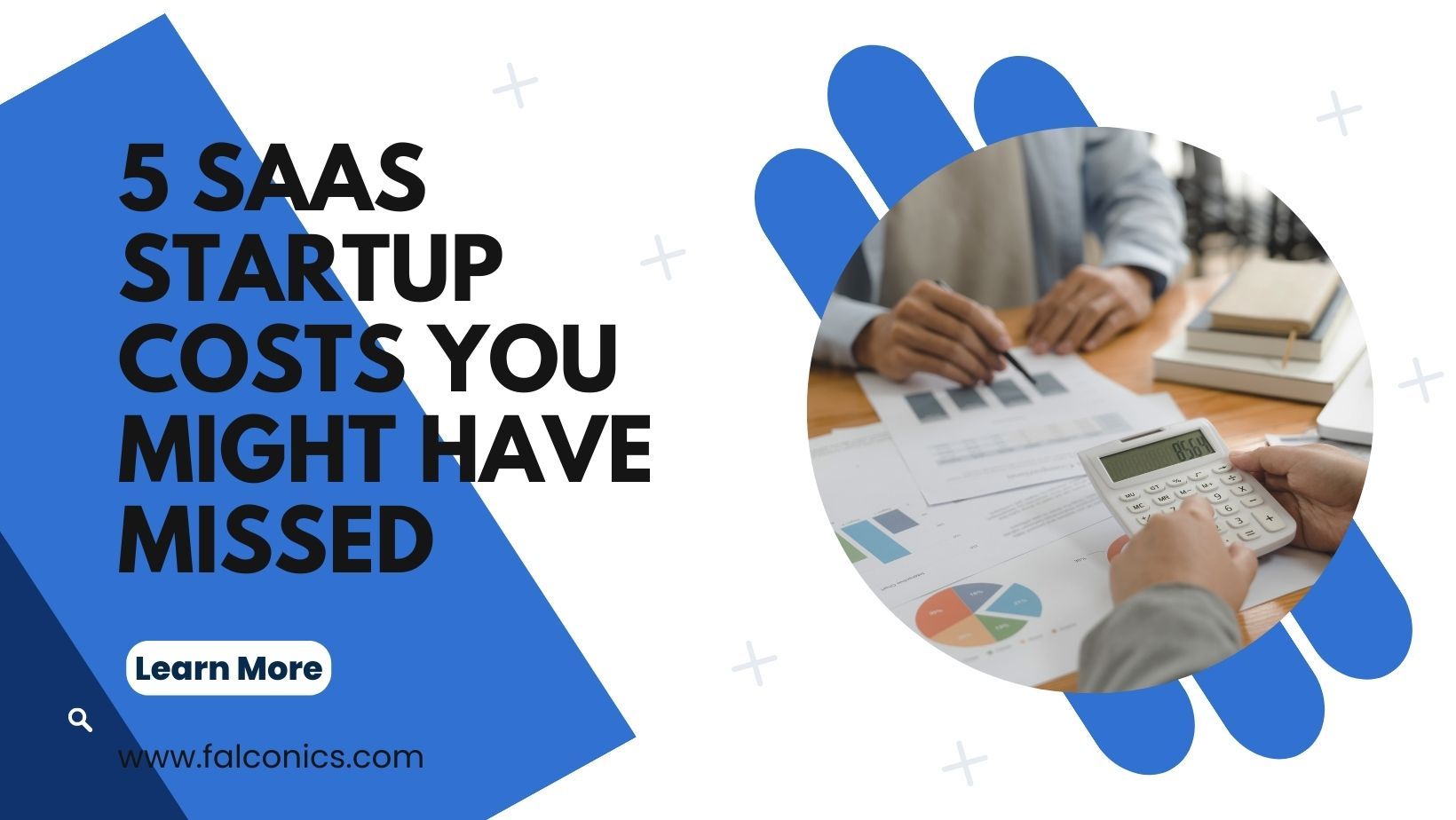5 SaaS Startup Costs You Might Have Missed

Starting a SaaS business feels like stepping into uncharted territory. It's exciting, a little daunting, and filled with endless possibilities. You've probably done your homework on the obvious expenses – development, marketing, maybe even a fancy coffee machine for those late nights. But what about the sneaky costs that slip through the cracks? In this blog, we'll dive into often 5 overlooked costs in the SaaS startup world.
What Are SaaS Startup Costs?
SaaS startup costs are the expenses involved in starting and running your SaaS business. It is the initial investment needed to get your digital doors open and to keep them that way.
These costs can be broadly categorized into two types:
One-time costs: These are expenses that you pay once, like purchasing equipment, getting your website up and running, or the initial cost of developing your software.
Recurring costs: These are ongoing expenses that you'll need to pay regularly to keep your business operational. This includes things like web hosting fees, salaries for your team, marketing and advertising expenses, and any software subscriptions you need for day-to-day operations.
Key Expenses in Running a SaaS Business
Running a SaaS business involves several key expenses that are important to keep in mind. Here’s a breakdown of what you can expect:
- Hosting and Infrastructure: Your software needs to be hosted somewhere, and this usually means paying for cloud services or servers. These costs vary depending on how much storage and computing power you need.
- Development and Maintenance: Keeping your software in good shape is crucial. This includes paying developers for creating new features, fixing bugs, and updating the software to keep it secure and efficient.
- Customer Support: Providing support to your users is essential. Whether it's through a dedicated team or a helpdesk service, this cost ensures that your users get help when they need it.
- Marketing and Sales: You need to spend money to make money. This means investing in marketing campaigns, sales teams, and tools to attract new customers and keep the current ones engaged.
- Operational Expenses: These are the day-to-day costs of running a business, like office expenses, utilities (if you have a physical office), accounting, and legal fees.
- Software Tools and Subscriptions: Running a SaaS company often means using other SaaS products. Whether it's for email management, customer relationship management (CRM), or analytics, these subscriptions can add up.
5 Hidden Costs in SaaS Startups
Below, we'll break down five SaaS startup costs that often go unnoticed but are crucial to your business's success:
1) Scope Creep
First up on our list of overlooked costs is 'scope creep'. This happens when the features or functions of your project keep growing beyond the original plan. Scope creep can be costly because it often leads to more development time and resources than initially planned. It's easy to think, “Let's add just one more feature,” but each addition costs time and money. It's important to stay focused on your core product and resist the temptation to keep adding features, especially those that aren’t essential at the start.
2) Smaller Costs
The second often overlooked cost is the accumulation of smaller expenses. These might seem insignificant on their own, but when added up, they can have a big impact on your budget. This can include things like transaction fees for payments processed, minor software tools that aid in daily operations, occasional freelancers for specific tasks, or even the cost of extra cloud storage or office expenses.
To manage these smaller costs effectively, it’s important to track them meticulously. Use a budget tracking tool or software to record every expense, no matter how small. Regularly review these costs to see where you can make efficiencies or cut back.
3) Post-Launch Development Support
Many startups focus heavily on the initial development and launch of their product, but it’s crucial to remember that the work doesn’t end there. You also need post-launch development support. This involves fixing any bugs that appear, making necessary updates, and possibly adding new features based on user feedback. This ongoing development is essential to keep your software running smoothly and to ensure customer satisfaction. It also helps in keeping your product competitive and up-to-date with market demands.
Budgeting for post-launch support means allocating funds for a dedicated development team or resources for ongoing maintenance. This is important to ensure that you can quickly address any issues that arise and continuously improve your product.
4) Audience Building Tools
Audience-building tools can include a range of things such as email marketing software, social media management tools, SEO optimization services, and advertising platforms. These tools are essential for creating awareness about your product, engaging with potential customers, and ultimately converting them into users of your service.
While it's tempting to rely on organic growth and word-of-mouth, investing in the right audience-building tools can significantly accelerate your growth and market presence. It's important to budget for these tools and consider them as an integral part of your marketing and growth strategy.
5) Advisers
The fifth and last overlooked cost for SaaS startups is the expense associated with hiring advisers. These are experts who can provide invaluable guidance and insights into various aspects of your business, from strategic planning to technical advice. They can come in many forms, such as industry experts, business strategists, legal consultants, or financial advisers. While it may seem like an added expense, especially for a startup working within a tight budget, the right advice can be instrumental in avoiding costly mistakes and accelerating your business growth.
Summary
Launching and running a successful SaaS startup requires more than just a great software idea. It demands careful planning and budgeting, taking into account the hidden costs we've discussed. By being proactive and accounting for these expenses, you'll be better prepared to navigate the challenges that come with building and scaling your
SaaS business.
And remember, for expert guidance and innovative solutions to help you navigate these challenges and optimize your SaaS startup's success, turn to Falconics – Your Partner in SaaS Excellence! Contact us today for more information about our services.




